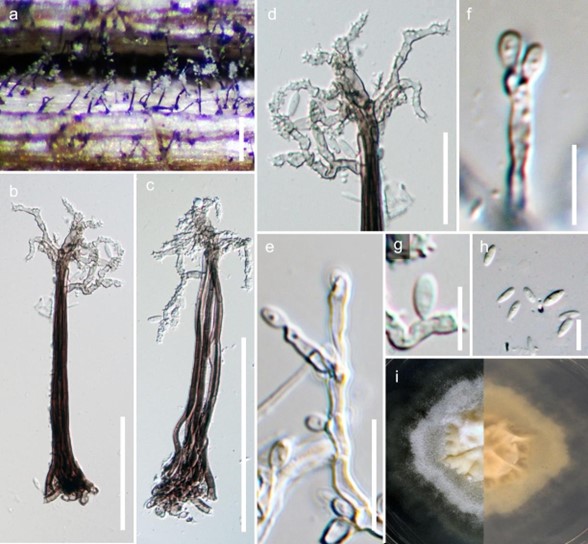Sarocladium Gams & D. Hawksw., Kavaka 3: 57 (1976)
MycoBank number: MB 9790; Index Fungorum number: IF 9790; Facesoffungi number: FoF 06266; 21 species with sequence data.
Type species – Sarocladium oryzae (Sawada) W. Gams & D. Hawksw.
Notes – Sarocladium oryzae was originally described as Acrocylindrium oryzae for a sheath- rot associated fungus on rice (Sawada 1922, Sakthivel et al. 2002). Gams & Hawksworth (1976) introduced Sarocladium for Acrocylindrium oryzae based on Sawada’s holotype collection. Giraldo et al. (2012) re-examined cultures of Acremonium, and included seven species in the Sarocladium clade. Thereafter, the phylogenetic relationship of Acremonium and Sarocladium species has been clarified, and 18 species are included in Sarocladium (Giraldo et al. 2015). Liu et al. (2017), Crous et al. (2018b) and Phukhamsakda et al. (2020) described Sarocladium brachiariae, S. clematidicola and S. dejongiae, respectively.
Sarocladium can be distinguished by its elongated phialides rising solitary on vegetative hyphae or on conidiophores that are sparsely or repeatedly branched, and the production of cylindrical conidia (Fig. 223). Below we illustrate Sarocladium clematidis.

Figure 223 – Sarocladium clematidis (Material examined – BELGIUM, Flemish Brabant, Botanic Garden, Bouchout Domain, on dead stems of Clematis patens (Ranunculaceae), 13 June 2017, D. Ertz BRCP3, MFLU17 –1507, holotype). a Appearance of synnemata on Clematis viticella. b, c Synnemata. d Conidiogenous cells and conidia. e Asexual morph produced in culture. f, g Conidiogenous cells and developing conidia. h Conidia. i Culture on PDA. Scale bars: a = 500 μm, b, c = 100 μm, d, e = 50 μm, f = 10 μm, g, h = 5 μm.
Species
